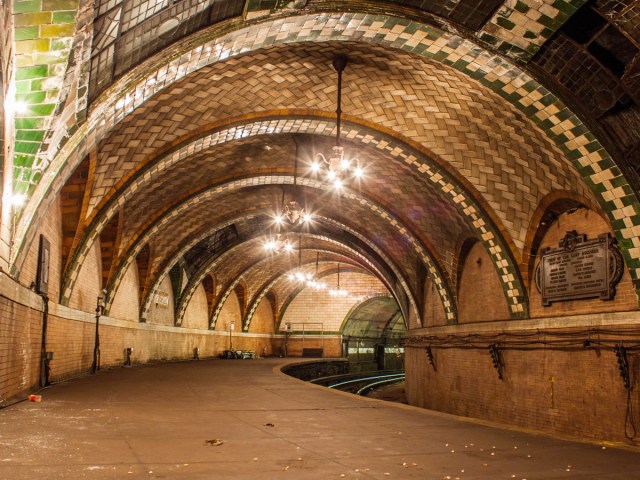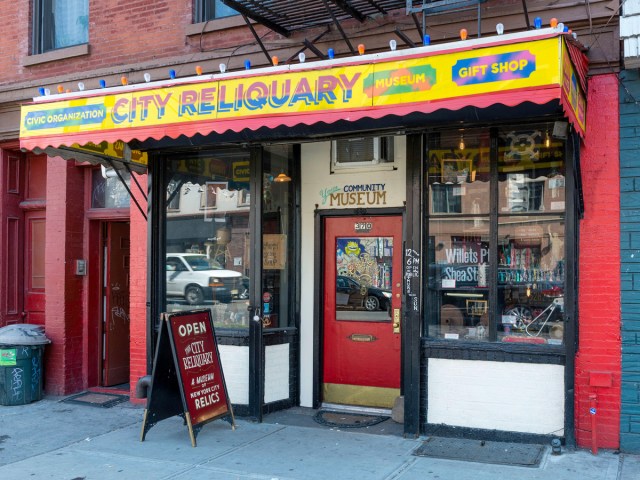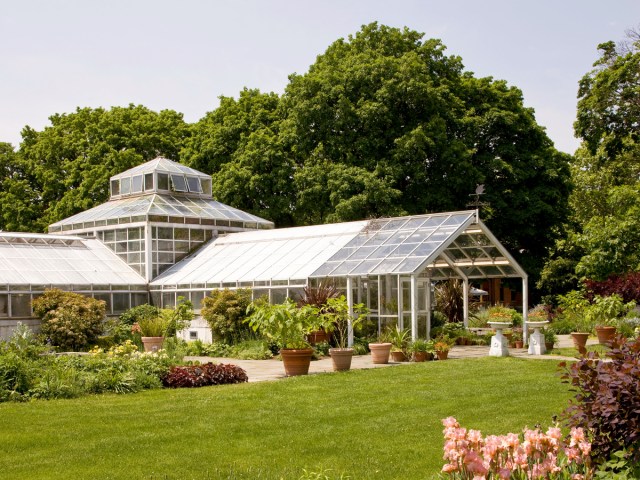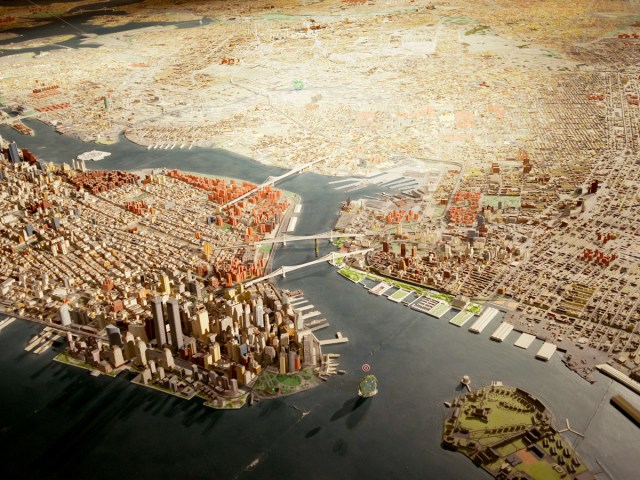Travelers from all over the world descend on the “City That Never Sleeps” to experience the singular culture of New York City. For first-time visitors, Central Park, Times Square, a Broadway show, the Empire State Building, the Brooklyn Bridge, a visit to MoMA, or an afternoon in Little Italy or Chinatown will likely be on the agenda. But what about those lesser-known spots that even some New Yorkers don’t know about? Discover five “secret” New York City sites that will deepen your understanding of the city’s history and lore.
City Hall Station

Lower Manhattan’s City Hall Station offers a fascinating glimpse into a bygone era of the Big Apple. Dating to 1904 as a part of New York City’s original subway line, this defunct station was designed in a Romanesque Revival style, featuring tile-clad vaulted ceilings, chandeliers, stained glass, and skylights. The station’s most distinctive feature, though, is its gracefully curving platform — and it’s that whimsical touch that ultimately shut down the station. As ridership increased, cars had to be lengthened, and those longer trains required longer platforms to navigate. Now, City Hall Station serves as a time capsule from a more genteel period of Manhattan’s transportation history.
Seeing City Hall Station can be tricky: It’s located at the end of the downtown-bound number 6 train, which ends at the Brooklyn Bridge stop just before those stunning vaults come into view. In-the-know passengers can attempt to stay aboard the train as it changes directions to head back uptown. As it does so, stowaways can get a peek of through the legendary station. Otherwise, look for tours led by the New York Transit Museum — which are free but infrequent (be sure to book well in advance).
Renwick Smallpox Hospital

Built in 1856 in the Gothic Revival style, Renwick Smallpox Hospital is a must-see for anyone who gets a kick out of exploring abandoned buildings. The historic New York City landmark — now in ruins — is located on Roosevelt Island. This was a strategic choice: Its isolated location in the middle of the East River made the whole of the island (then known as Blackwell’s Island) a quarantine zone.
In those days, New York’s population density and constant influx of immigrants made it an epicenter for smallpox. Fortunately, in the late 19th century, a successful vaccine eradicated the disease, and the hospital was closed. Since then, time, weather, and vandals have decimated the building, leaving only its crumbling facade. Today, the ruins are viewable but fenced off and home to a feral cat colony, but a public park is planned for the area.
Aside from the hospital, the rest of Roosevelt Island is an off-the-beaten-path destination worth exploring. Accessible via the bright red Roosevelt Island Tram, which offers sweeping views of the city, the island is also home to the Blackwell Island Lighthouse, dating to 1872, and the Octagon, an imposing eight-sided structure that once served as an asylum entrance. Also on the island is the Blackwell House, one of the oldest structures in New York City, along with FDR Four Freedoms Park — a tribute to former President Franklin Delano Roosevelt. Designed in the 1970s by world-famous architect Louis Kahn, it was only recently completed in 2012.
City Reliquary

What started as a resident’s quirky window display of found objects is now a museum displaying an impressive array of New York’s everyday relics and ephemera. From the outside, Dave Herman’s City Reliquary looks like a classic New York City bodega or deli — complete with a vintage, multicolored awning.
But instead of snacks and lottery tickets, the tiny space is packed with a rotating assemblage of subway tokens and turnstiles, postcards and handbills, cornerstones and cobblestones, antique bottles and baseball cards — even a fortune-teller’s booth and a burned-out lightbulb from the Statue of Liberty’s torch. With a scope that is both broad and entertaining, there is truly something for everyone: sports buffs, amateur historians, and burlesque fans alike.
The collection — which includes artifacts donated by museum visitors — is located across the East River from Manhattan, in Brooklyn’s Williamsburg neighborhood. It chronicles a sort of cultural history of New York through everyday and often disposable items. In addition to the exhibits, the Reliquary hosts events throughout the year ranging from crafting nights and tag sales to podcast tapings, music tributes, and film screenings. The shop is also worth a visit for one-of-a-kind New York souvenirs, from classic tchotchkes to artist-made items.
Snug Harbor Cultural Center

A scenic (and free) ride on the iconic Staten Island Ferry might already be on your itinerary — so you might as well add a wholly unique cultural stop while you’re at it. A visit to Staten Island’s Snug Harbor features fascinating exhibitions on local history and contemporary art, a concert hall, a children’s museum, and manicured gardens — including the Chinese Scholar’s Garden, a recreation of Ming Dynasty-era Chinese gardens built by 40 Chinese artisans and shipped to Staten Island.
Snug Harbor stems from Robert Richard Randall, an heir to a shipping fortune who passed away in 1801. His will dictated that the family’s assets be used to build a sort of retirement community for “aged, decrepit, and worn-out sailors.” Over the next century, some 50 architecturally significant structures were built across 83 acres to house and enrich the lives of retired sailors from all over the world. The campus was essentially self-sustaining, with farms and a dairy, a power plant, a chapel and cemetery, a power plant, a hospital, dormitories, and green spaces.
In the 20th century, as both the endowment and number of residents dwindled, the complex began to fall into disrepair. But in the 1960s, the newly formed New York City Landmarks Commission saved several remaining buildings as the city’s first landmark structures. And by the 1970s, the city purchased the property as a cultural destination and ultimately merged it with the Staten Island Botanical Gardens.
Panorama of the City of New York

Now that you’ve traveled from Manhattan and Roosevelt Island to Brooklyn and Staten Island, it’s time to visit Queens. The Panorama of the City of New York, a permanent exhibit at the Queens Museum, is a 9,335-square-foot model of the entire city’s five sprawling boroughs. It’s built to a scale of 1:1,200 — one inch equals 100 feet, making the Empire State Building about 15 inches tall.
Urban planner Robert Moses conceived of the project to celebrate the city’s infrastructure for the 1964 world’s fair. Led by Raymond Lester and Associates, the model was constructed by around 100 artisans over the course of three years. In the 1990s, the Panorama was overhauled to more accurately depict the city’s approximately 895,000 individual structures, streets, and parks — making it somewhat of a time capsule.
The museum is located in Flushing Meadows Corona Park. On one end, the park features Citi Field — home of the New York Mets — and on the other you’ll find several experimental structures and buildings erected for the 1964 and 1939 world’s fairs. These include the Unisphere, a 12-story spherical stainless steel representation of the Earth and the UFO-shaped New York State Pavilion and lookout towers. The park also hosts the annual U.S. Open tennis tournament, and includes the New York Hall of Science, the Queens Zoo, a huge public marina, and the Fountain of the Planet of the Apes.
More from our network
Daily Passport is part of Optimism, which publishes content that uplifts, informs, and inspires.























